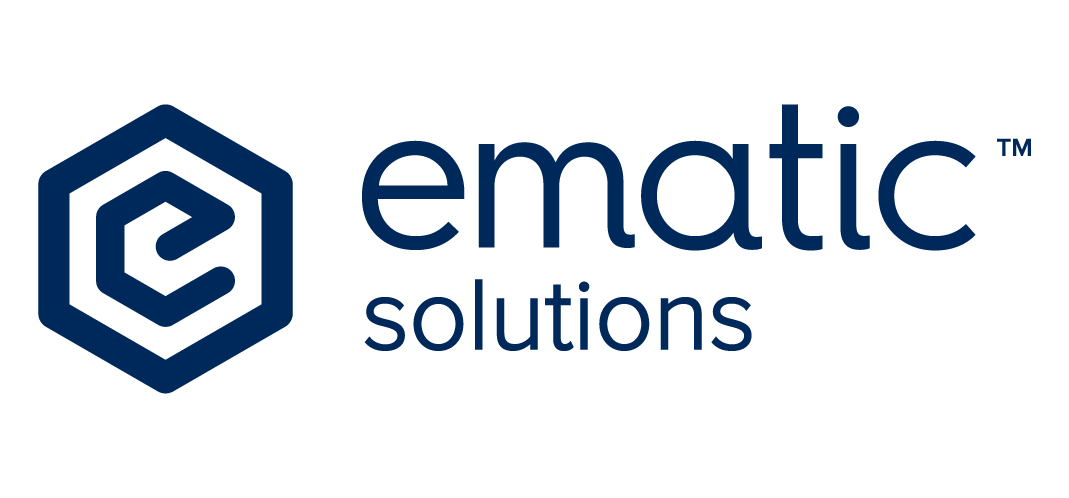What is a Content Management System (CMS)?
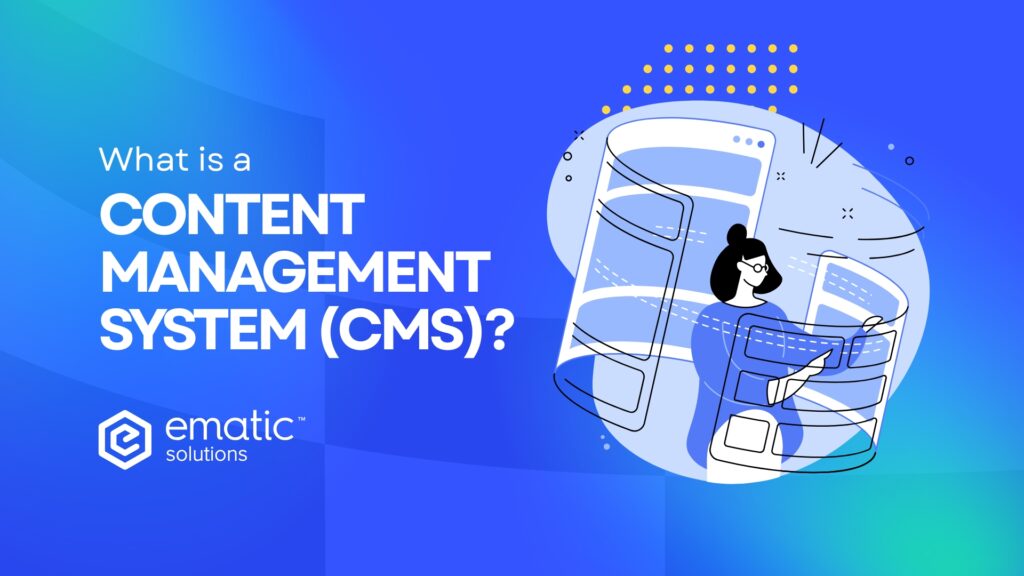
A Content Management System (CMS) is a software platform that allows users to create, manage, and publish digital content without requiring extensive coding knowledge. It simplifies website management, making it ideal for businesses, bloggers, and eCommerce store owners. With features such as pre-built templates, intuitive dashboards, and various plugins, a CMS offers an efficient way to maintain a website while ensuring scalability and security. How Does a Content Management System Work? A CMS separates content creation from website design and functionality. Users interact with a dashboard or editor to create and format content, while the CMS takes care of storing and displaying it. Key components include: This dynamic structure allows the CMS to update content in real-time without altering the site’s code. How Does a CMS Help to Build Websites? A CMS streamlines the website creation process, offering ready-made tools and resources that eliminate the need for technical expertise. Most platforms come with pre-designed templates, allowing users to quickly set up websites and customize them to align with their brand. With drag-and-drop page builders, layout creation becomes intuitive, requiring no coding skills. Additionally, CMS platforms include a range of plugins and integrations that introduce functionalities such as contact forms, SEO tools, booking systems, and eCommerce capabilities, supporting future business growth. Content editors with WYSIWYG (What You See Is What You Get) interfaces allow for easy text formatting, image insertion, and content arrangement without needing to access the back-end code. A CMS also supports collaboration, allowing teams to work together efficiently. Users can define roles and permissions to ensure a smooth workflow between content creators, designers, marketers, and developers. This collaborative environment ensures businesses can launch, maintain, and scale professional websites with ease. Key Features of a CMS A reliable CMS offers several features to support both beginners and advanced users: Why Use a CMS for Your Website? A CMS offers numerous benefits that can streamline digital operations and enhance your online presence. Benefits of using a CMS: CMS platforms are designed for users with little to no coding experience, making it easy to update content, upload media, and manage pages without technical help. By reducing reliance on developers for routine tasks, businesses can significantly lower website maintenance costs while achieving faster turnaround times for updates. Whether you’re managing a small blog or a growing eCommerce store, a CMS can adapt to increasing traffic, content volume, and evolving business needs without requiring major platform overhauls. With pre-built templates, themes, and quick setup processes, CMS platforms enable businesses to launch websites much faster compared to building from scratch. Many CMSs come equipped with built-in SEO tools or plugins that simplify optimizing on-page elements, improving site structure, and boosting visibility on search engines. Leading CMS platforms have vibrant global communities that provide extensive resources, such as plugins, templates, troubleshooting guides, and user forums, ensuring you can find help whenever needed. What Kinds of Websites Can You Build with Content Management Systems? A CMS is versatile enough to support various website types, such as: How to Build a Website with a Content Management System? Building a website using a CMS generally involves several essential steps to ensure a smooth setup and a strong foundation for growth. Step 1: Choose the Right CMS Selecting the right CMS is crucial and depends on your website goals, technical expertise, and long-term needs. Choosing the appropriate CMS will save time, reduce costs, and ensure your site is future-proof. Here’s a quick comparison of popular CMS platforms according to different business types: CMS Platform Best For Key Features Free/Paid WordPress Blogs, Business Sites, Portfolios Thousands of themes and plugins, highly customizable, SEO-friendly Free (with optional paid themes/plugins) Shopify eCommerce Stores Built-in shopping cart, payment gateway, inventory management Paid premium plans Wix Small Businesses, Personal Websites Drag-and-drop editor, built-in marketing tools, easy setup Free basic plan & premium plans Drupal Large Enterprises, Government Sites Highly secure, flexible content types, scalable architecture Free (requires separate hosting) Magento (Adobe Commerce) Large eCommerce Businesses Advanced product management, customizable checkout, multi-store capabilities Paid premium plans Joomla Small to Medium Businesses, Community Sites Extensible, flexible templates, strong community features Free (with optional paid extensions) Step 2: Pick a Hosting Provider For CMS platforms like WordPress or Drupal, you’ll need external hosting. Choose a reliable hosting provider that offers high uptime, fast loading speeds, good customer support, and CMS-friendly features like one-click installations and automatic backups. Some CMS options like Shopify and Wix include hosting within their service. Step 3: Install the CMS Most hosting providers offer one-click CMS installation, making the setup process fast and beginner-friendly. Follow the prompts, set your admin credentials, and configure basic site settings. Step 4: Select a Theme or Template Themes control your website’s design and layout. Choose a template that matches your brand identity and business goals. Most CMS platforms offer both free and premium themes that can be customized to fit your needs without coding. Step 5: Install Necessary Plugins or Extensions Enhance your site’s functionality by installing plugins or extensions. Depending on your goals, you might add tools for Search Enginie Optimization (SEO), contact forms, eCommerce capabilities, security enhancements, or analytics tracking. Step 6: Create and Organize Content Start by building your key pages such as Home, About Us, Services, and Contact. Create blog posts, product pages, multimedia galleries, and any other necessary content. Structure your site logically with categories, menus, and internal links to improve user experience and SEO. Step 7: Optimize for SEO Incorporate SEO best practices by using relevant keywords, optimizing image sizes, setting up clean URLs, writing compelling meta descriptions, and building a mobile-friendly design. Many CMS platforms have SEO plugins to help automate and guide these processes. Step 8: Launch and Maintain Your Website Before launching, thoroughly test your website for broken links, mobile responsiveness, page speed, and functionality across different browsers. After launching, maintain your site by regularly updating your CMS, plugins, and content to ensure security, improve performance, and keep users engaged. By following these steps, you’ll be able
How to Read Google Search Console (GSC) Data

Google Search Console (GSC) is a free tool from Google that helps website owners understand how their site appears in search results. If you have an online store and haven’t set up GSC yet, you should create it now to start tracking your site’s performance. Knowing how to read GSC data can help improve your site’s visibility. This guide will break down the key reports in GSC and how to use them to optimize your website. 1. Performance Report – Measuring Website Visibility The Performance report provides insights into how users find your website and interact with it. This report is crucial for understanding your site’s visibility and identifying opportunities for optimization. The Performance report shows how your site is performing in Google Search. Here’s what to focus on: You can also view the exact queries users are searching for and their current rankings in Google SERPs. This helps you assess how to improve your website and better align it with user intent. The image below displays our organic traffic performance over time, helping us assess whether our website is improving, declining, or remaining stagnant. As shown, we can clearly see a significant improvement compared to last year’s performance. What you can do: 2. Indexing Report – Ensuring Pages Are Indexed The Indexing Report in Google Search Console helps you understand how Google crawls and indexes your website. The main categories include: Pages The Pages section under the Indexing Report helps you understand which pages on your site are indexed by Google and which ones are not. This section is crucial because if a page isn’t indexed, it won’t appear in Google’s search results. Key Metrics in the Pages Report Common Reasons Pages Are Not Indexed GSC categorizes unindexed pages into different statuses. Here’s what they mean and how to fix them: 1. Discovered – Currently Not Indexed 2. Crawled – Currently Not Indexed 3. Excluded by ‘Noindex’ Tag 4. Blocked by Robots.txt 5. Duplicate Without User-Selected Canonical 6. Alternate Page with Proper Canonical Tag 7. Soft 404 8. Page with Redirect How to Use the Pages Section Effectively ✅ Check for drops in indexed pages – A sudden decrease in indexed pages could indicate indexing issues.✅ Fix non-indexed pages – Review the reasons and resolve them to ensure important pages get indexed.✅ Regularly inspect new pages – Use the URL Inspection Tool to confirm if a new page is indexed.✅ Ensure proper redirects and canonicalization – Avoid duplicate content issues by correctly setting up canonicals. Understanding and optimizing the Pages section helps ensure that Google indexes the right pages, improving your site’s visibility in search results. Sitemaps A sitemap is a file that lists all the important pages on your site, helping Google discover and index them more effectively. The Sitemaps Report in GSC shows which XML sitemaps Google has processed and whether there are any errors. Key Metrics in the Sitemaps Report: How to Use It: Removals The Removals section allows you to temporarily remove URLs from Google’s search results. Here’s what you need to know: What You Can Do in the Removals Section When to Use It ✅ A page has sensitive information and needs to be removed from search results quickly.✅ A deleted product or outdated content is still appearing in search.✅ You’ve updated content, but the cached version shows old information. Important Notes 3. Page Experience Report – Evaluating User Experience Google prefers websites that provide a smooth user experience. This report covers: Example LCP issues exceeding 4 seconds on mobile Scenario Problem: The website owner checks the Google Search Console’s Core Web Vitals report and finds that 408 URLs are marked as poor due to LCP (Largest Contentful Paint) issues exceeding 4 seconds on mobile. The report shows no URLs in the “Good” or “Need Improvement” categories, indicating severe performance issues. Possible Causes: Action Plan: Expected Outcome: Example good HTTPS Report 4. Links Report – Understanding Backlinks and Internal Links Links are important for SEO, and this report helps you see: How to Use It: 5. Manual Actions & Security Issues – Avoiding Google Penalties. If Google detects violations of its guidelines, you’ll see warnings here: Scenario: Your traffic suddenly drops, and Google Search Console shows a manual action for “thin content” on multiple pages. Google considers these pages low quality. Adding useful content and submitting a reconsideration request can restore rankings. How to Use It: Final Thoughts Google Search Console provides valuable insights that can improve your site’s performance in search results. By regularly checking these reports, fixing errors, and optimizing content, you can boost your site’s rankings and attract more visitors. So if you’re new to GSC, this will help you make data-driven decisions and grow your online presence even more. Want to know more about your site performance? Contact Us Now for a Free Website Audit!
Internal Linking: A Simple Strategy for Better SEO
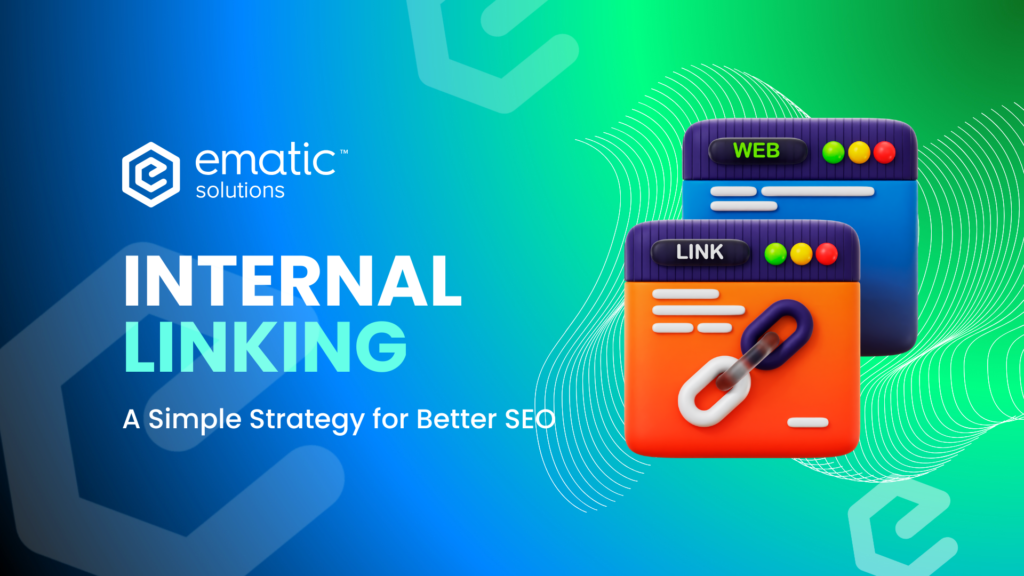
Internal linking is a simple yet powerful SEO strategy that often goes unnoticed. By linking pages within your website, you create a clear path for visitors to navigate your content while helping search engines understand your site’s structure. When done right, it improves user experience, boosts rankings, and strengthens your overall SEO. This guide will show you why internal linking is essential and how to make the most of it. What Is Internal Linking? Internal linking is simply linking from one page on your website to another. The main purpose is to help users explore related content and guide search engines in understanding your site. Here is a simplified illustration of what internal links look like: For example, if you have a blog post on “The Best Winter Jackets,” and you link to another post on “How to Layer for Winter,” that’s an internal link. Think of your website like a web, where each page is connected to another. The stronger these connections, the better the experience for users—the more Google will love your site. Internal Links vs. External Links: What’s the Difference? Internal links connect pages on your own site to make it easier for both users and search engines to find their way around. External links, however, point to other websites and can build credibility by linking to trusted sources. Both types of links are important for SEO—internal links improve navigation and user experience, while external links add value and help boost your site’s authority. Types of Internal Links 1. Navigation Links These are the links in your website’s menu, sidebar, or footer that help visitors get to key pages like “Shop,” “Blog,” or “Contact Us.” 2. Contextual Links These are the links you add within your content, usually using anchor text (the clickable text). They’re the most valuable for SEO because they provide context and guide users to relevant pages. Example:“Stay ahead in 2025 with the best SEO tools to optimize your website and boost rankings.” 3. Breadcrumb Links Breadcrumb links are like little signposts that show users where they are on your site and make it easy for them to navigate back. You’ll usually see them at the top of the page, right below the main menu. It might look something like this: Home > Blog > SEO > Internal Linking Each part is clickable, so users can jump back to any section they want without having to hit the back button or search through the menu. 4. Image Links Clickable images that link to other pages also count as internal links. Just make sure they have alt text so search engines can understand what they’re about. 7. Related Post Links These are links that appear at the end of blog posts, suggesting other related posts to keep users engaged. These help drive traffic to other content and can keep visitors on your site longer. 9. Call-to-Action (CTA) Links CTA links are a type of internal link designed to encourage users to take action, such as making a purchase, signing up for a newsletter, or downloading an ebook. These links are usually prominent, styled as buttons, and placed strategically on pages to guide users towards conversion goals. Why Internal Linking is Important for SEO? It Helps Search Engines Discover and Index Your Pages Search engines use bots to crawl your site, following links to find and index pages. If a page isn’t linked anywhere, it might not even show up in search results. Internal links ensure that all your pages are accessible and properly indexed. It Passes Authority Between Pages Some pages on your site naturally have more authority—like your homepage. By linking from these stronger pages to others, you help spread that authority (also known as “link juice”), improving rankings for important pages. If your homepage gets a lot of backlinks, linking from there to a new product page can help it rank better in search results. It Keeps Visitors on Your Site Longer Ever clicked on an interesting link in an article and ended up reading five more posts? That’s the power of internal linking! It encourages visitors to stay longer, which reduces bounce rates and signals to Google that your content is valuable. It Helps Rank Important Pages Higher If there’s a page you really want to rank—like a key product or service page—linking to it frequently from relevant content can signal to Google that it’s an important page. How to Set Up an Internal Linking Strategy? Building a strong internal linking strategy is key to getting the most out of your website’s SEO potential. Here’s how to set it up: 1. Start with Your Most Important Pages Focus on linking to your most valuable pages first. These could be high-conversion pages like product pages, key service pages, or cornerstone content. Linking to these often helps boost their visibility and SEO rankings. Think of these pages as your site’s “powerhouses” that need more internal links. 2. Create a Logical Structure Organize your content in a way that makes sense for both users and search engines. Group related pages into categories and use internal links to connect them. For instance, if you have a blog post about SEO, link to other related posts, guides, or services on SEO. This helps keep visitors engaged and encourages them to explore more. Example: Main Guide: “The Ultimate SEO Guide” 3. Use Natural, Descriptive and Keyword-Rich Anchor Text Anchor text is the clickable part of a hyperlink. Instead of using generic phrases like “click here,” use descriptive or keyword-rich text that tells users and search engines what the linked page is about. ❌ Poor Anchor Text: “Click here to read more.”✅ Good Anchor Text: “Learn more in our Beginner’s Guide to SEO.” 4. Link to Deep Pages, Not Just the Homepage Don’t just link to your homepage or top-level pages. Make sure to link to deeper, less-visited pages, like blog posts or category pages. These pages might not get a lot of natural traffic, but by linking
How Backlinks Can Boost Your Organic Traffic
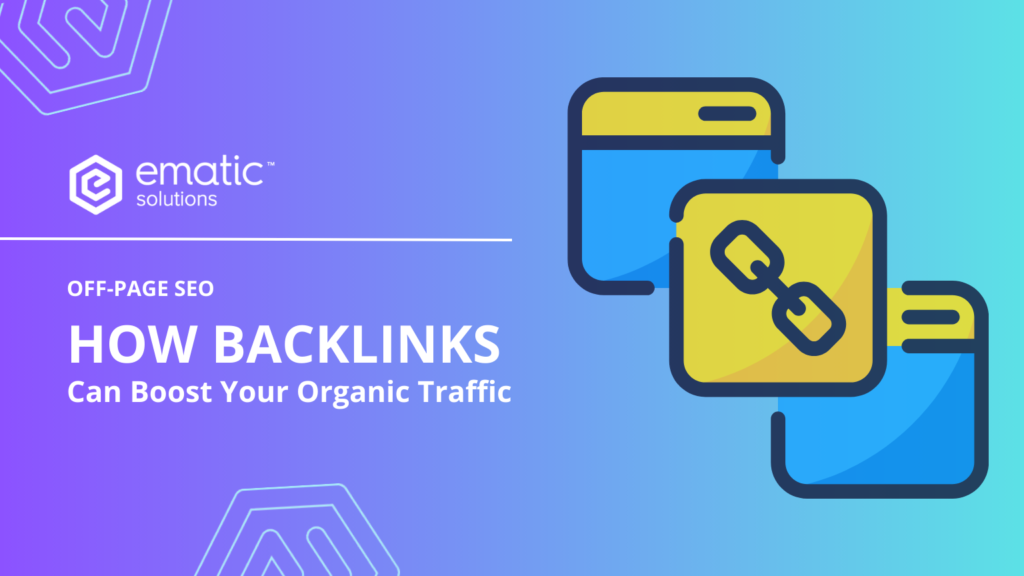
Backlinks are essential for improving your website’s visibility and driving organic traffic. Let’s dive deeper into what backlinks are, why they matter, and how you can effectively use them to boost your site’s performance. What is a Backlink? A backlink is a link from one website to another. Think of it as a recommendation or a vote of confidence. When a reputable website links to your content, it signals to search engines that your site is trustworthy and valuable. How Do Backlinks Affect Domain Authority? Domain Authority (DA) is a metric developed by Moz that predicts how well a website will rank on search engine result pages (SERPs). It ranges from 1 to 100, with higher scores indicating a greater ability to rank. Backlinks are one of the key factors influencing DA. It also helps boost your organic traffic. The higher your DA, the easier it will be to rank on Google Search. Here’s why. Credibility and Trustworthiness Backlinks from authoritative and relevant websites signal to search engines that your site is credible and trustworthy, positively impacting your DA. Increased Organic Traffic Backlinks can drive direct referral traffic to your website, which can indirectly improve your DA by showing search engines that your site is popular and engaging. Improved SERP Ranking As DA increases due to strong backlinks, your website becomes more likely to rank higher on search engine result pages (SERPs). Anchor Text Optimization When backlinks use relevant anchor text, it further helps search engines understand your content, contributing to better DA and rankings. Long-Term Benefits Backlinks provide a cost-effective strategy for sustained organic growth, as they keep benefiting your site without ongoing costs and unlike paid advertising, the benefits of backlinks are long-lasting. Once you have earned a backlink, it continues to contribute to your site’s SEO and traffic over time. How to Build High-Quality Backlinks Create Valuable Content: Produce high-quality, informative, and unique content that others want to link to. Guest Posting: Write for reputable sites in your industry and include backlinks to your site. Outreach and Networking: Contact influencers and bloggers in your niche to share your content and build relationships. Use Social Media: Share your content on social platforms to encourage others to link to it. Monitor and Adjust: Use tools like Google Search Console to track your backlinks and disavow harmful links. Tools to Help with Backlink Building Tool Features Pricing SEMRush Comprehensive suite of SEO tools, including backlink analysis, competitor research, and outreach management. Helps find backlink opportunities, track backlinks, and monitor competitors. Plans start at $139.95/month. Ahrefs Powerful backlink analysis tools with detailed insights into backlink profiles. Supports finding link-building opportunities and tracking progress. Plans start at $99/month. Moz Tools for link building, keyword research, and site audits. The Link Explorer tool analyzes backlink profiles and identifies new opportunities. Free for checking up to 3 domains per day. Plans start at $99/month. SE Ranking User-friendly SEO platform offering backlink tracking, website audit, and keyword rank tracking. Includes backlink checker and competitor backlink analysis. Plans start at $39/month. Common Mistakes in Backlink Building Backlink building is a crucial component of SEO, but many website owners make common mistakes that can harm their site’s ranking and reputation. Here are some common pitfalls to avoid: Getting low-quality backlinks from spammy or irrelevant websites can harm your ranking. Focusing on quantity over quality, leading to a poor link profile. Ignoring anchor text optimization, resulting in unnatural linking patterns. Not maintaining links, leading to broken or outdated links. Targeting the wrong audience or niche for backlinks, wasting efforts and missing potential traffic. — Do you think backlinks are important? I’d say they’re essential. Backlinks play a crucial role in your SEO strategy, helping to improve search engine rankings, drive referral traffic, build credibility, speed up indexing, and foster industry connections. By focusing on securing high-quality backlinks from reputable sources and leveraging the right tools, you can significantly increase your organic traffic and achieve sustainable success. Would you like more specific strategies on how to build backlinks for your website? Contact us for a FREE SEO audit today and get personalized insights to improve your online presence!
Long-Tail Keywords: How to Effectively Use Them in SEO
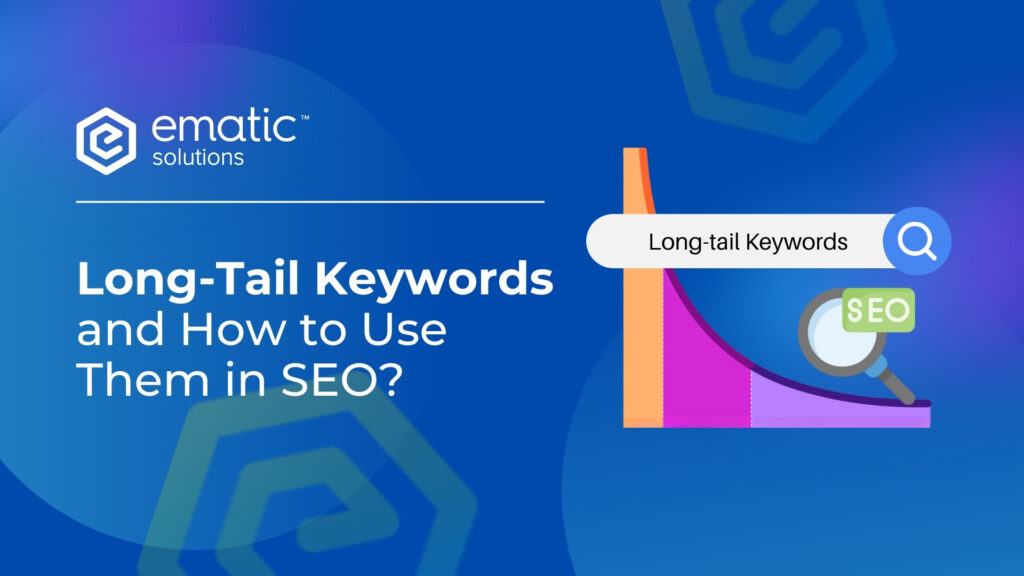
What are Long-Tail Keywords? Long-tail keywords are specific phrases that consist of three or more words and are highly focused on a particular topic or audience. Unlike short-tail keywords, which are broader and more competitive (e.g., “shoes”), long-tail keywords target niche markets (e.g., “comfortable walking shoes for women”). These keywords may have lower search volumes, but they often attract highly relevant traffic and are easier to rank for in search engines. They reflect what users are specifically searching for and help businesses connect with their ideal customers. Example of Long-Tail Keywords Below are examples of how people often use them when searching: Short-Tail Keyword: “shoes”Medium-Tail Keyword: “running shoes”Long-Tail Keyword: “what is the best running shoe for beginners” Additional examples: Comparing Short-Tail vs. Medium-Tail vs. Long-Tail Keywords Aspect Short-tail Keyword Medium-tail Keyword Long-Tail Keyword Keyword “laptops” “laptops for students” “best laptops for students under $500” Search Volume High Moderate Low Competition High Moderate Low Search Intent Semi Semi-specific Highly specific Conversion Potential Low Medium High Why Long-Tail Keywords are Important in SEO? A 2020 study by Backlinko analyzed over 1 billion search queries and found that long-tail keywords have a 3-5% higher click-through rate compared to head terms. This highlights the significant impact the keywords in driving meaningful engagement and conversions. Here are some reasons why targeting long-tail keywords is necessary for SEO: Search Intent Example of Keyword Audience Behaviour Informational “what is a black tie dress code” Seeking knowledge or understanding about dress codes, typically without immediate intent to buy. Commercial “summer dress for women” Comparing options or researching product categories to find the best match before making a decision. Transactional “buy dress online Malaysia” Ready to purchase and are looking for a platform or store to complete their transaction. Navigational “Zara outlets in Malaysia” Searching for nearby physical locations to meet their immediate needs. Local “costume rental shop near me” Specifically looking for a known brand or store location, intending to visit or browse directly. How to Effectively Use Long-Tail Keywords for SEO? Mastering the use of long-tail keywords requires a mix of research, content creation, and strategic optimization. Each step plays a vital role in maximizing their impact. To find the best long-tail keywords and effectively implement your strategy, doing any of these steps is considered a must: Step Action Examples Conduct Thorough Keyword Research Use tools like Google Keyword Planner, SE Ranking, or Ahrefs to find relevant long-tail keywords. Focus on search intent and relevance. Look for “question-based” keywords. “How to choose the best running shoes for beginners” Create Specific and Valuable Content Incorporate long-tail keywords naturally into your content. Create blogs, product comparisons, tutorials, or listicles. Blog post titled “How to Choose Comfortable High-Heeled Shoes for Weddings” Optimize Meta Tags and Headings Include long-tail keywords in meta titles, descriptions, and H1 or H2 headings. Ensure they are engaging and descriptive. Meta title: “Shop Organic Skincare for Sensitive Skin Online” (instead of just “Organic Skincare Products”) Leverage FAQ Sections Answer common questions related to your long-tail keywords. This can help with featured snippets. FAQ: “Best laptops for gaming under $1,000” with answers addressing battery life, processor, storage, etc. Use Keywords in Alt Text and URLs Optimize images with descriptive alt text including long-tail keywords. Create SEO-friendly URLs. Alt text: “A young woman using an ergonomic chair for back pain relief” URL: “/ergonomic-office-chairs-for-back-pain” 3 Things to Avoid in Targeting Long-Tail Keywords When working with long-tail keywords, certain pitfalls can hinder your success. Therefore, avoiding these common mistakes will help you refine your strategy: How to Measure the Impact of Long-Tail Keywords Tracking and analyzing the performance of your long-tail keyword strategy ensures continuous improvement and alignment with business goals. To understand the effectiveness of your strategy, it is advisable for you to: Key Takeaways Ready to Improve Your SEO Keyword Strategy? At Ematic Solutions, we specialize in crafting data-driven SEO strategies to boost our client’s online presence. Whether you’re new to SEO or looking to optimize your existing strategy, our team is here to help. Contact us today and get a free consultation to unlock the full potential of SEO keywords for your business!
What is Google PageSpeed Insights?
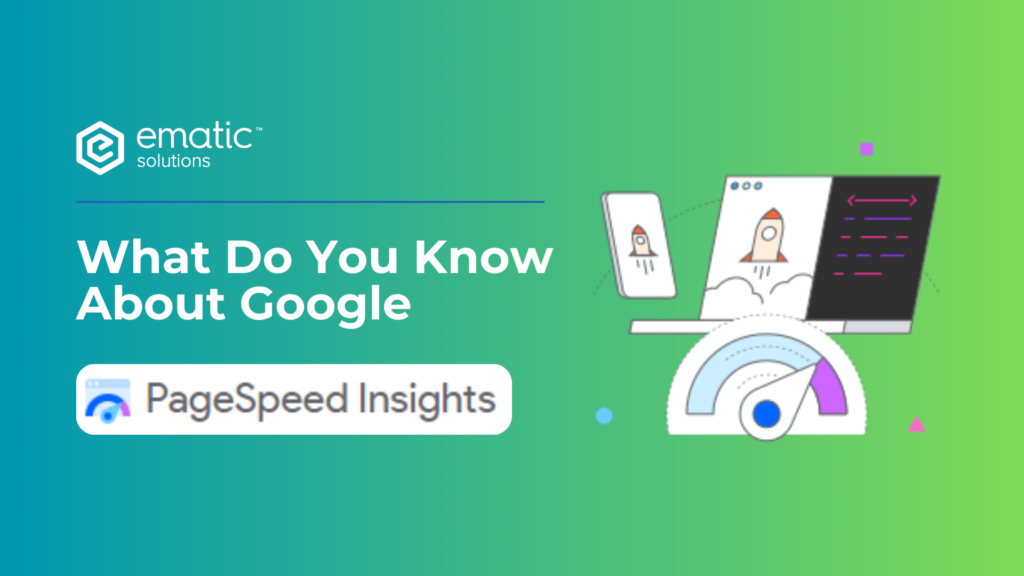
In today’s digital world, website performance plays a critical role in user experience and search engine rankings. Google PageSpeed Insights (PSI) is a powerful tool that helps website owners and developers assess and enhance the loading speed of their web pages. Let’s dive deeper into what PageSpeed Insights is, how it works, and why it matters for your website’s success. What is Google PageSpeed Insights? Google PageSpeed Insights is a free tool that analyzes the performance of a webpage, providing detailed insights into how fast your site loads on both desktop and mobile devices. It evaluates various factors that affect page speed and offers suggestions for optimization. The tool assigns a score ranging from 0 to 100, with a higher score indicating better performance. Scores are color-coded for easy interpretation: Score Range Performance Description Color Code 90 – 100 Excellent Performances Green 50 – 89 Needs Improvements Orange 0 – 49 Poor Performance Red Table 1: PageSpeed Score Ranges PageSpeed Insights is widely regarded as one of the essential tools for enhancing website performance, which can positively impact both user experience and search engine rankings. How Google PageSpeed Insights Works PageSpeed Insights analyzes a webpage by running various tests to determine how efficiently it loads. The tool relies on two primary types of data: Google PSI uses these metrics to calculate an overall score. Key performance indicators include: KPI Description Target Value To Achieve First Contentful Paint (FCP) Time it takes for the first visible content (text, image, etc.) to appear on the screen. 1.8 seconds or less Largest Contentful Paint (LCP) Measures how long it takes for the largest content element (image or text block) to fully load on the screen. 2.5 seconds or less Cumulative Layout Shift (CLS) Assesses visual stability by measuring how much the page layout shifts during loading. High CLS scores indicate unstable elements that move around unexpectedly. Less than 0.1 First Input Delay (FID) Tracks the time it takes for the page to respond to the first user interaction, such as clicking a button or link. Less than 100 milliseconds Table 2: Key Performance Indicators (KPIs) These metrics provide actionable insights for improving both loading speed and overall user experience. Why PageSpeed Matters Fast-loading websites are essential for retaining users and ranking well on search engines. Several reasons highlight why optimizing page speed is crucial: How to Use Google PageSpeed Insights Using Google PageSpeed Insights is simple. Follow these steps to get started: Tips for Improving Your PageSpeed Insights Score Here are some common strategies to improve your website’s performance and PageSpeed Insights score: Issues Definition Solutions Description Optimize Images Large images can slow down webpage loading times, leading to a poor user experience. Compress Images Use tools like TinyPNG or ImageOptim to reduce image file sizes without losing quality, ensuring faster load times while maintaining visual fidelity. Leverage Browser Caching Without caching, browsers must retrieve all resources from the server every time a user visits, leading to slower load times. Set Cache Expiration Configure your web server to enable caching for static resources (like images and CSS), allowing browsers to store these files for a specified time, speeding up subsequent page loads. Minify CSS, JavaScript, and HTML Unminified files contain extra characters like spaces and comments, which can bloat file sizes and impact loading times. Use Minification Tools Utilize tools such as CSSNano for CSS and UglifyJS for JavaScript to remove unnecessary characters from your code, decreasing the overall file size and improving load times. Use a Content Delivery Network (CDN) A single server may not efficiently deliver content to users in different geographic locations, resulting in longer loading times. Implement a CDN Distribute your website’s content across multiple servers located around the globe. This allows users to access your site from a nearby server, reducing latency and improving load times. Eliminate Render-Blocking Resources CSS and JavaScript files that block the rendering of the page can delay the display of visible content to users. Defer Non-Essential Scripts Modify the loading behavior of CSS and JavaScript files by using async or defer attributes in script tags. This allows the page to load without waiting for these resources to finish loading. Reduce Server Response Time Slow server response times can delay the initial loading of the webpage, impacting user experience. Optimize Server Performance Upgrade to faster hosting solutions, use dedicated servers, or optimize database queries to ensure quicker server response times, enhancing the overall performance of your website. Reduce Unused CSS Styles that are not utilized on a webpage can unnecessarily increase the size of CSS files, leading to slower load times. Remove or Reduce Unused CSS Audit your stylesheets to identify and eliminate CSS rules that are not used on specific pages, which will help reduce file sizes and improve loading performance. Enable Compression Transmitting uncompressed files can lead to larger payloads, slowing down page load times for users. Use Gzip or Brotli Compression Enable server-side compression for text-based files (like HTML, CSS, and JavaScript). This significantly reduces their sizes during transfer, leading to faster load times. Prioritize Visible Content Non-essential resources that load before critical content can slow down the rendering of the page, delaying user interaction with visible elements. Load Critical Content First Inline critical CSS and defer loading of non-essential resources. This ensures that the main content appears quickly, improving the user experience. Avoid Multiple Page Redirects Each redirect adds extra HTTP requests, which can slow down loading times and negatively impact user experience. Minimize Redirects Reduce the number of redirects used on your website. Instead of redirecting users from one URL to another, ensure they access the final destination directly to streamline loading. Table 3: Common Issues Identified by Google PageSpeed Insights Google PageSpeed Insights is an invaluable tool for website owners looking to improve their site’s performance. By understanding how the tool works and implementing its recommendations, you can enhance both the speed and user experience of your website. Not only will this result in better search engine
Don’t Get Lost in the Redirect Maze: Understanding 3xx Codes

Ever clicked a link and landed on a different page than expected? That’s the magic (or sometimes mystery) of 3xx redirects in action. For website owners and SEO enthusiasts, understanding these redirects is crucial. They can be your secret weapon for a smooth user experience and maintaining top search engine rankings, or a confusing detour if not implemented correctly. What are 3xx Redirects? Imagine your website as a bustling city. Streets (URLs) lead visitors to specific shops (webpages). Sometimes, shops move locations. To avoid frustrated customers, you put up signs (redirects) directing them to the new address. Similarly, 3xx redirects are instructions from a website server, telling users (and search engines) that a webpage has permanently (301) or temporarily (302) moved to a different URL. This ensures visitors find the intended content, even if the old address lingers in bookmarks or search results. Why are 3xx Redirects Important for SEO? Search engines like Google value a user-friendly experience. Redirects, when used strategically, can: Not all redirects are created equal. Here’s a breakdown of the most common ones, including their functionalities and SEO impact: Code Description Use Cases Impact on SEO 301 (Moved Permanently) Informs search engines and users that the webpage has permanently moved to a new location. Use this when content has permanently moved to a different URL (e.g., page rebranding, domain migration). Crucial: Transfers link juice (SEO value) to the new URL. Maintains ranking potential. 302 (Found) This is a temporary redirect, informing users and search engines that the requested page is temporarily located at a different URL. Use this for short-term situations like website maintenance or A/B testing. Minimal: Does not transfer link juice. May impact SEO slightly if used excessively. 303 (See Other) This code instructs the user agent (browser or search engine crawler) to access the resource from a different URL using the GET method. Less common, often used for redirects that involve forms or authentication. Varies: May or may not transfer link juice depending on server configuration. 307 (Temporary Redirect) Similar to 302, but specifically for HTTP methods that don’t allow the body to be resent (e.g., POST). Use for temporary redirects involving forms or data submissions. Minimal: Does not transfer link juice. May impact SEO slightly if used excessively. Table 1 showcase the type of the common 3xx redirections How to Check and Fix Redirect Issues Properly managing redirects is crucial for maintaining a seamless user experience and preserving your site’s SEO value. Here’s a step-by-step guide on how to check and fix redirect issues: Step 1: Identify Redirect Issues Step 2: Analyze the Redirect Path Step 3: Fix Redirect Issues Step 4: Test the Fixes Step 5: Monitor Regularly By following these steps, you can ensure that your redirects are working effectively, providing a seamless experience for users and maintaining the SEO integrity of your site. Best Practices for Using 3xx Redirects Here are some of the practices that you can follow for your website: In conclusion, 3xx redirects are a powerful tool for website owners and SEOs alike. By understanding their purpose and using them strategically, you can ensure a smooth user experience, maintain SEO value, and keep your website running like a well-oiled machine. So, the next time you encounter a redirect, remember – it’s not a dead end, but a signpost guiding you to the right destination. Curious About SEO? Contact Us Now for a Free Website Audit!
Understanding Search Intent: Top vs. Bottom of Funnel Keywords in SEO
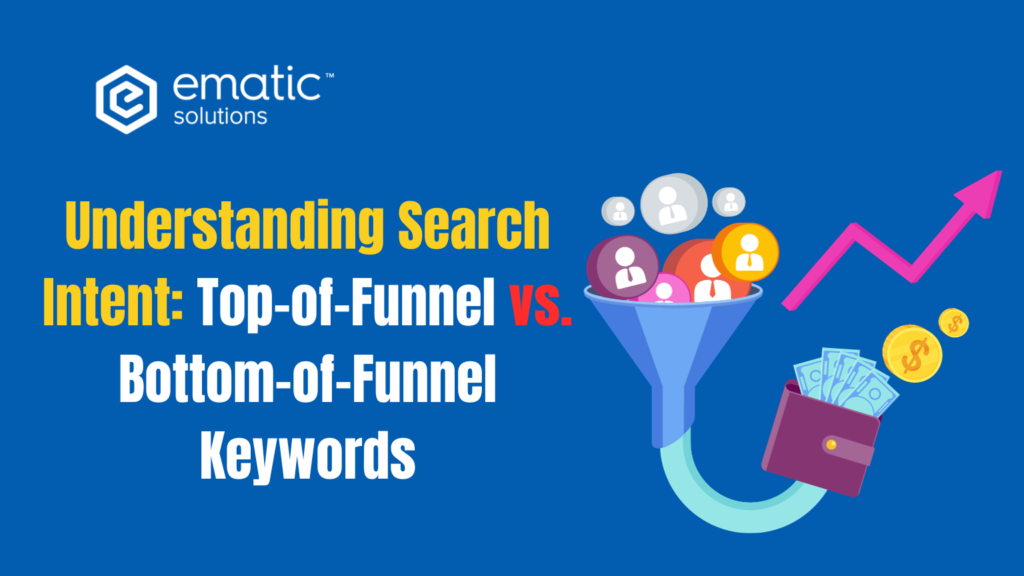
In the vast digital landscape of the internet, where information is abundant and competition is fierce, understanding the nuances of search intent is crucial for the success of any online business.
A holistic SEO checklist for 2022
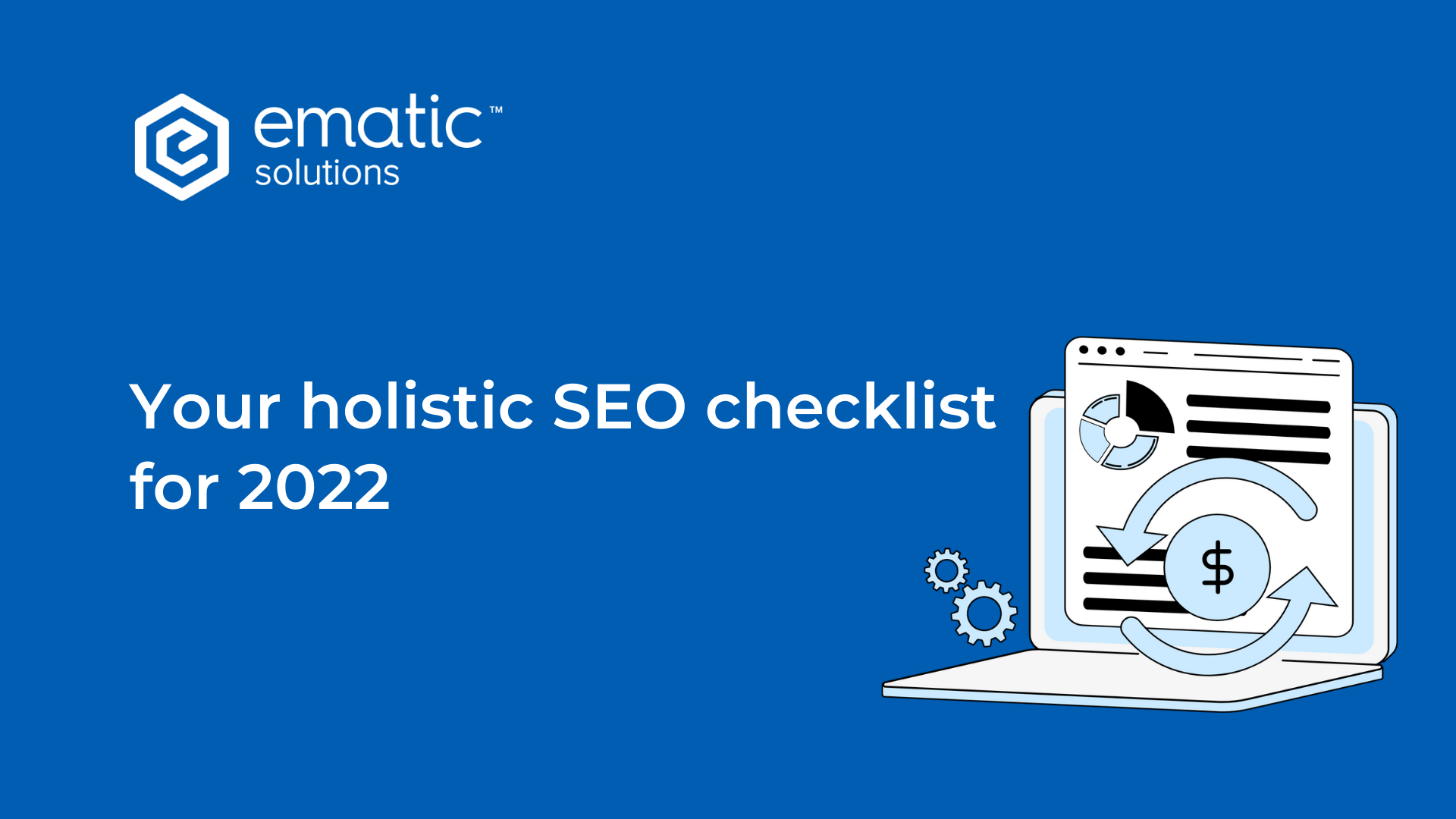
SEO is far beyond just writing content with keywords we think our potential customers may fill in those little search bars in different search engines. It encompasses a whole range of different audits, analyses, and actionable plans. But not as complicated as it may sound, the process can be divided into 6 steps, each of which has a different set of checklists that we can easily follow. Ematic has compiled those checklists below for you to have a quick look at your current SEO. In each of the steps, we also note some of the things (if any) that we do differently compared to other SEO agencies in the market. You can also contact us so that we can guide you through our own steps in a more in-depth session. Download the checklist here. Competitor Review In fact, prior to this step, the first thing we need to do is to look at ourselves in general. Some questions we may ask include: what our strategy towards SEO is, what our target market is, how we are doing with our website, whether or not some of the popular keywords related to our products/services show up in search engines, etc… Although detailed analyses of our own SEO performance will be incorporated into later steps, this quick check will probably give us a rough idea of our current state and hopefully help us set some expectations for the project. There is an old saying that goes: “He who sees through life and death will meet most success.” Indeed, when we can identify our competitors, what they have been doing, and where they are standing right now in the market, we can choose to follow best practices or decide to go our own way for differentiation. Doing competitor analysis is one of the best ways to identify customer insights through keyword research. This also helps us figure out what functions on their websites may bring the most value to their (and our) customers. The more information we obtain, the more options we have when we think about our strategy to compete. All in all, there surely is a reason why our competitors showed up in the top search results, right? At Ematic, the first thing we do when it comes to SEO is to conduct thorough research on potential competitors. Below are some headings that you can choose to follow for your own quick competitor check. What to do Research product/service categories of the competitors Research competitors’ main keywords Identify their organic search volume in the latest months Identify their organic search volume growth history Research their customer insights Identify their useful website features Technical Audit A website is a place where we showcase our products/services, direct our customer journeys, pin featured offerings, display sale promotions, or collect customer info from sign-up forms. Needless to say, it is the single most important asset for those who rely on websites to sell. As a result, helping search engines understand our products/services and customers is crucial. Only then, search engines can know who our potential customers are and suggest our website to match with their searched keywords. The list below suggests several aspects you can look into when it comes to optimizing your website for better search engine optimization. What to do Consolidate duplicate URLs URL structure Breadcrumb XML sitemap Robots.txt Robots meta tags Page 404 error Schema YMYL & EAT Core web vitals – page speed score Keyword & Content Planning Search engines were born for users to get answers to various problems in their lives. Therefore, we need to figure out exactly what problems our target audience is currently having; from that, create content that helps them identify and solve their problems through using or buying our products or services. One important thing to note is that when building content, we must first focus on bringing the RIGHT and VALUABLE information to our customers, rather than the length of the article. Even though word count is one criterion Google uses to evaluate website content, this should be the last step for optimization and improvement to meet the guideline, rather than the initial focus when starting to draft our pieces of content. Also, tactics to fool Google’s algorithm may bring short-term success. However, in the long run in case Google updates or changes its evaluation criteria (which is the thing Google does quite often), content that lacks insights into helping customers solve their problems will surely become useless and fall out of the top positions. Besides the mentioned issues, below are the steps you can follow for your keyword & content planning phase: What to do Identify keywords gap with competitors Conduct content overview (pay attention to thin content and duplicate content) Prepare content guidelines & SERP insights Prepare keyword list & suggested topics Do content writing Conduct website content monitoring On-page Optimization “How much traffic does our website have?” – This is a very easy question since we can check it every day on Google Analytics. Now, let’s tweak it a little bit: “How many landing pages on our website bring in that amount of traffic?” – This is tough, right? On average, only 5% of the landing pages on our website bring in 80% of the total traffic. The other 20% is brought in through another 25% of the landing pages. This indicates that a noticeable number of landing pages (70%) contribute 0 traffic to the website! As a result, continuously conducting on-page optimization is a must to make sure we keep bringing a good amount of traffic to our ecosystem. The principle of this phase is, therefore, to identify potential keywords and populate them in relevant articles. At Ematic, we have a special approach in this step for better management and optimization, but you can take the checklist below as the starting point. What to do Optimize heading & outline Add keywords in the page title & meta description Add potential keywords & paragraph Add Internal links Add Images Off-page Optimization An
Ematic’s Approach to SEO: Technical and Marketing Overall Focused
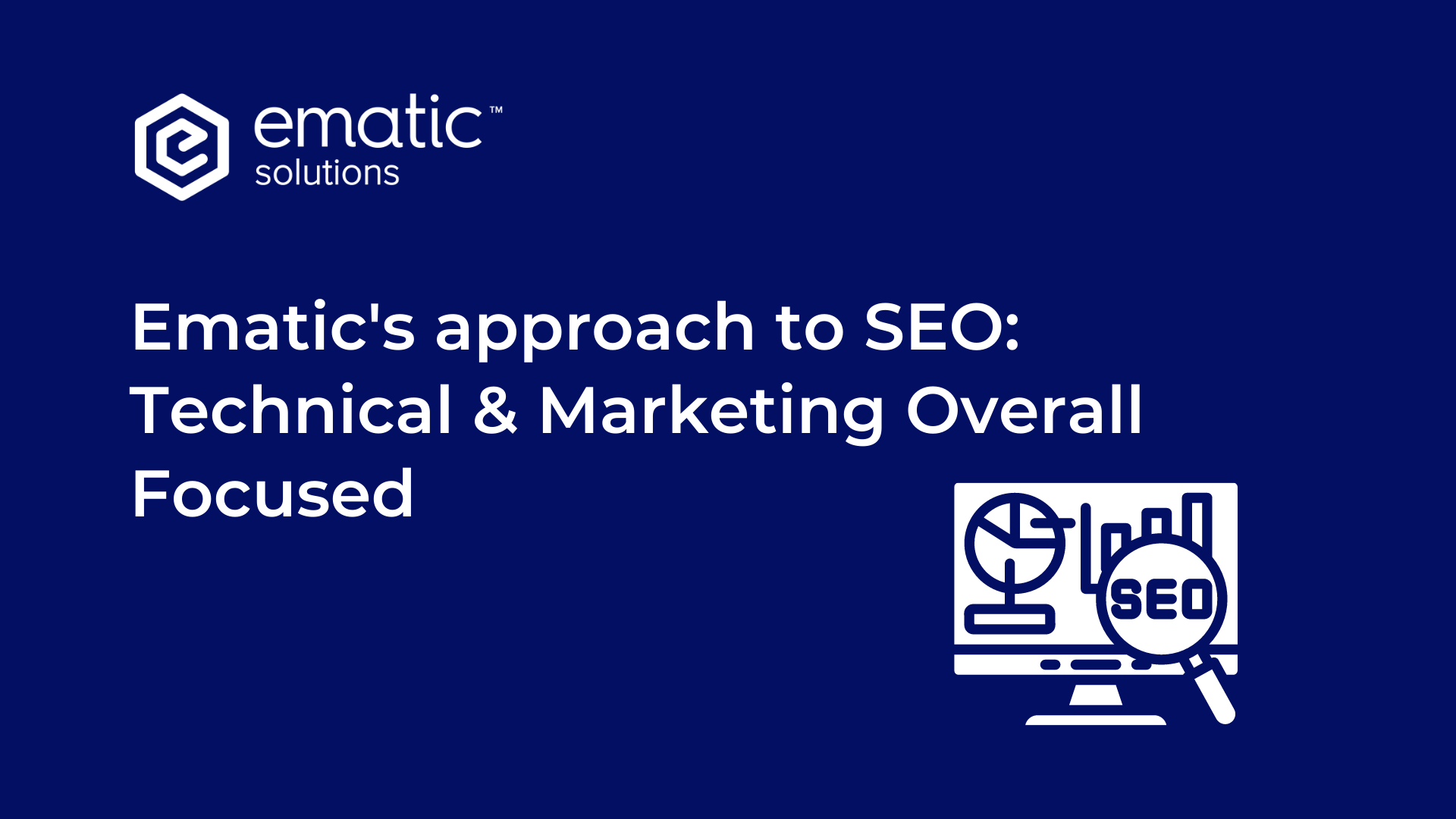
Asia currently accounts for more than half of the global internet users while continuously leading the world in economic growth. This makes building a strong online presence a must for any business. However, gone are the days of the money game when more ad spending means more awareness and conversion. The immediate impact of the Covid-19 crisis has dramatically cut down marketing expenses (as a proportion of revenue), well from an average of 11% to 6.4% in 2021. Also, social media advertising is becoming more and more expensive with skyrocketing CPAs (cost per acquisition) that gradually draw marketers away from this used-to-be gold mine that once brought in a stable and profitable flow of online traffic. As a result, CMOs start paying serious attention to a more ROI-secured set of channels, one of which is SEO.
